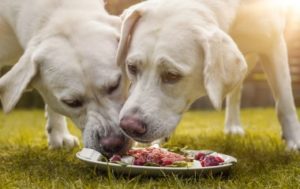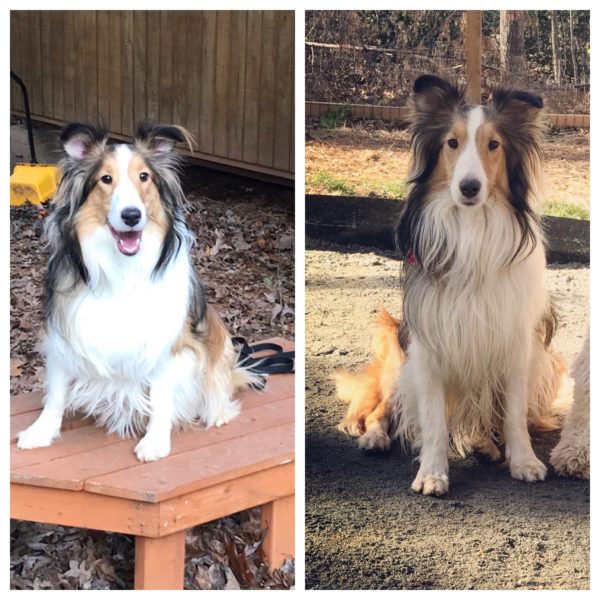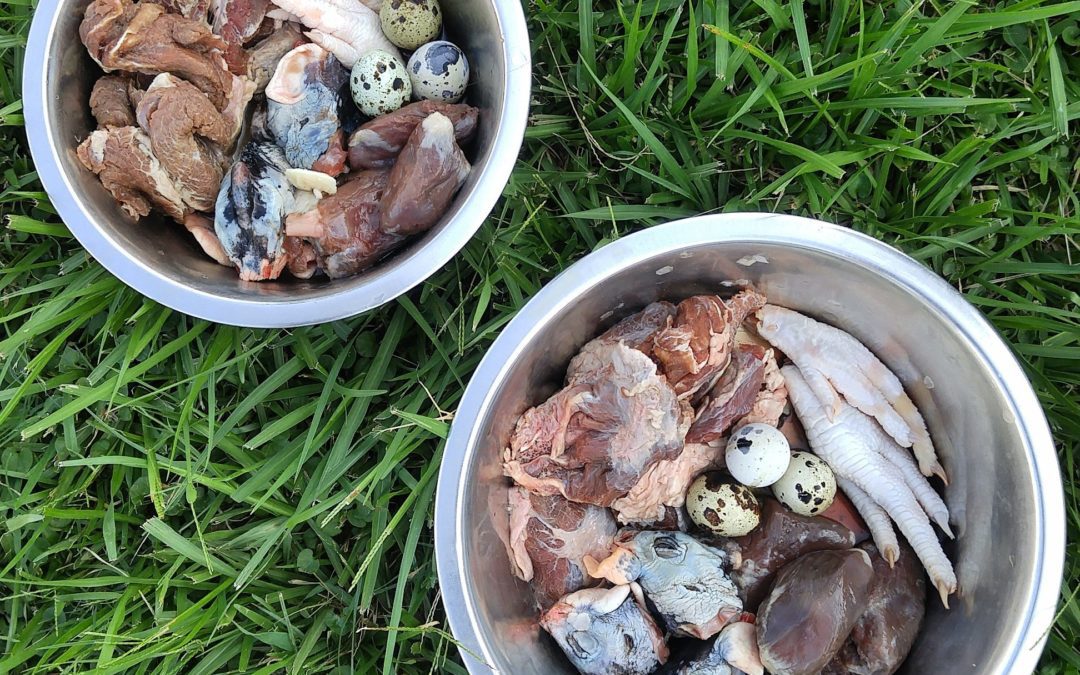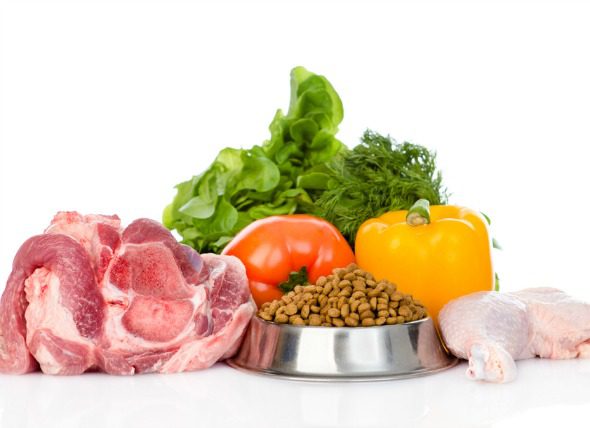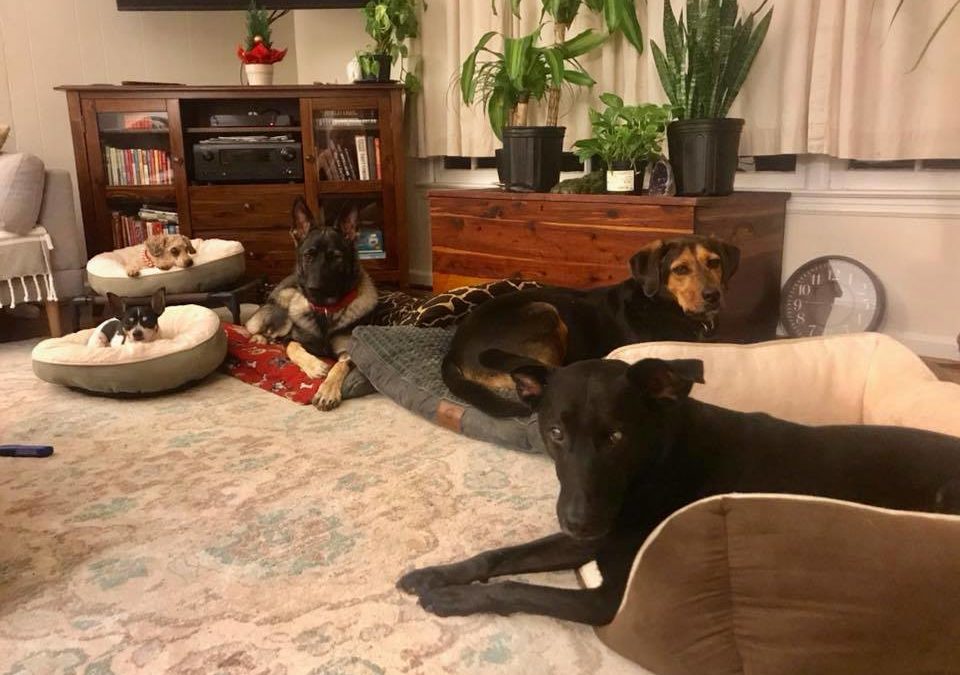We deal with dogs’ food aggression daily at Off Leash K9 Training, Raleigh/Durham. Many people ask, “How can I stop food aggression with my dog?”
First, food aggression in dogs can be caused by numerous factors, including poor pack leadership, food desperation where the dog doesn’t know if or when he will get more food (common in rescue and shelter dogs), dog views you as more of a threat than a provider, basic communication breakdown between pack leader and dog, in general.
There are 5 key areas that one must target to start fixing food aggression in dogs. There is a fundamental approach to rehabilitating a dog that exhibits food aggression. Our approach targets five basic areas: obedience, positive associations with people, pack leadership, confidence building, and proper correction for negative behavior. All five components are necessary to rehabilitate a dog successfully.
First, we focus on obedience and confidence building. We target this area first because we believe you cannot work on behavioral modification until you have a dog that will listen to you. If you have no control over your dog, you cannot expect to fix a behavioral issue so it is imperative to work on obedience. Confidence building is a part of training as it naturally boosts confidence, gives dogs a job, and instills a purpose for them. Obedience will also naturally establish you as the pack leader.
Pack leadership is very important; your dog must see you as such. There are many things you can do to establish pack leadership. See our Pack Leadership blog to get some pointers. Think about a wild pack of wolves. If you watch, the alpha male always eats first and will always scare off the lower members in the pack. When your dog exhibits food aggression towards you, he/she is essentially trying to get you away from the food, generally because he/she does not see you as alpha.
Once you have started working on obedience training, confidence building, and establishing yourself as a pack leader, start putting your dog’s food on the floor or a mat. This will prevent your dog from having a specific object to resource guard. Put a little bit of food down (a small handful will suffice). Once your dog eats the food, he/she will look up at you. As soon as that happens, put a little bit more down. Repeat this entire process until normal feeding is complete. What does this do? It reinforces that YOU control the food.
Next, start having your dog sit or lay down while you are pouring his /her food (this is where your obedience training comes into play). Once you are finished putting the food on the floor or mat, wait a minute or so and then release your dog to eat. This very effective exercise teaches your dog aggressive dog that 1. You control the food, and 2. You control when it is time to eat. It also teaches your dog self-control.
Now, you need to start assigning positive associations to you being around while your dog is eating. How is this accomplished? While your dog is eating (on the mat or floor), approach his bowl from about 3-4 feet away (depending on your dog’s tolerance level with his food aggression). Toss some high-valued reward near your dog… it could be as simple as a few pieces of hot dog or lunch meat or something. As your dog gets comfortable, slowly move in closer and toss the remaining rewards into his/her food. Practice this at each feeding until you can stand beside your dog and put the reward in his food. You are teaching your dog to associate you approaching his/her bowl with someone positive!
Last, proper correction must be employed for negative behavior. This reverts to your selected training program. Make sure to find a qualified trainer to show you how to correct this behavior (properly being the keyword) properly. There has to be a correction when the dog displays negative behavior (growling, snarling, snapping, etc.). This is no different than what would happen in the wild. For example, there would be a correction if a lower pack member tried to correct the alpha male of a pack of wolves. It is just as important to let your dog know that there is a consequence for displaying food-aggressive behavior as it is to let your dog know there is a reward for NOT displaying the behavior.
By following these tips, you should be able to reduce or eliminate food aggression in your dog drastically.
https://raleighncdogtrainers.com
https://www.facebook.com/olk9raleighdurham

